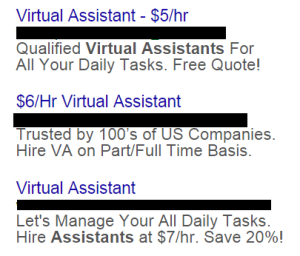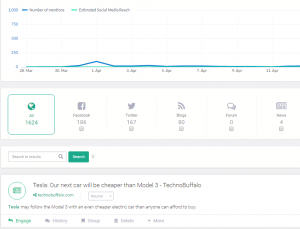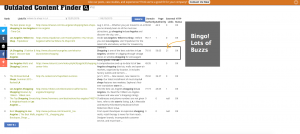We’re in a Game of Thrones dry spell these days, so what better way than to glean real world lessons from Westeros’s favorite clans?
Whether you’re fighting for the iron throne or networking online with LinkedIn, developing connections is key. I’ve already outlined the advantages to having more connections on LinkedIn – you can boost your website traffic, earn better post engagement, develop your brand reputation, and become a networking titan, all with a little LinkedIn connection calibration.
You know why you need more LinkedIn connections, but how do you go about getting them? Today I’ll reveal the secret techniques used by top strategists, whether they wield valyrian steel or social networking knowledge.
1. It’s All in the Family (and Friends): Import Email Contacts
The most successful ruling families of Westeros are tight-knit and rely on one another for help. They use trusted family members and lords bound to them from surrounding areas to help their cause. Of course, some families are a bit too tight-knit, if you get my drift…
While you may not have several lords and many tracts of lands as part of your kingdom, chances are you do have some family and friends. Make the most of those born and bred connections by importing your existing contacts to LinkedIn.
Many online apps and tools harass us into importing contacts from email services, but as users, we largely ignore this option – and for good reason. If you imported your email contacts for every app, software, and site you signed up with, you’d have a lot of angry friends (if you had any left).
However, when it comes to LinkedIn, it’s worth giving this often-skipped option a second thought.
There’s a good chance your email contacts will want to be your LinkedIn contacts, as well. LinkedIn is a professional network where people want to connect with you, not the Candy Crush-esque game of the week.
2. Peddle Your Wares Outside of Your Kingdom: Use Various Online Networks
Don’t just ask for LinkedIn connection requests on LinkedIn. It’s important to get your word spread everywhere, from North to South, and look to develop LinkedIn loyalty in areas all across the web.
While using ravens is one way to get your message out, there are better ways for LinkedIn users (besides, the feathers and bird scat make cleaning your keyboard a nightmare).
If you blog, include a link to your LinkedIn profile, asking people to connect with you from there. Send out an email blast encouraging subscribers to find you on LinkedIn. Plentifully promote your LinkedIn profile.
3. It’s All About Who You Know (or May Know)
In Game of Thrones, you never know who could be your distant cousin, a banished former ruler of The Night’s Watch, or your dead sister’s lovechild. Luckily for you, LinkedIn is interested in reminding you of the connections you may have forgotten about (and in the Game of Thrones universe, we always need help keeping track of who is who).
Good luck remembering everyone. [credit to Michael JD ]
Try to periodically check in with LinkedIn’s “People You May Know” section – it tends to offer fresh connection suggestions every week. It’s the LinkedIn equivalent of the classic: “Oh, you went to Boston College? Do you know Luke Federino? Oh…no? Do you know Charlotte Matterbury? No? Oh…ok, never mind.”
Not all of us have huge social circles. Daneyers wasn’t born with an army; she had to earn every friend and soldier, and you may have to as well.
What’s magical is that sometimes you DO know the people LinkedIn suggests. Add the folks you recognize and go beyond by connecting with people with whom you share a high number of connections (even if you don’t know them in the traditional sense). Use this discerningly, though. If too many of your connection invitation requests get declined, your account will get blocked. Not everyone in this kingdom can be trusted (looking at your Mormont).
Even if you do get blocked, it isn’t the end of the world. It just means that you’ll have to know a user’s e-mail address before requesting them as a connection. Still, it’s best to avoid getting your account flagged, so try to only send out connection requests to users who you think will be likely to add you back. Two hundred and fifty-nine connections in common is a pretty safe bet that your connection request will be approved, regardless of whether or not you know the individual.
4. Prepare the Ravens: We’re Going to Need More Parchment
Words can be a powerful asset for any would-be ruler, and while some may ignore your message (poor Eddard Stark), the few that take heed could be your new allies.
Strap up the ravens with those cute little message tubes and use any excuse to send a connection request letter.
[from Headline Shirts]
Before I attend a conference, I’ll send out a LinkedIn connection request to the other speakers with a quick message – something along the lines of:
“Hey, we’re both speaking at X conference, let’s connect!”
Or try:
Hey [insert name], I really enjoyed reading you recent article about SEO strategies – it’d be great to connect so that I can keep an eye on your future posts, too.
No one is going to shoot that down, unless they’re a jerk, in which case I don’t want to be their friend anyway!
Even if you’re not an honored knight or a big shot speaking at some event, just send out a connection request telling someone that you enjoyed his or her presentation and want to connect. A connection request is extending your arm in friendship; most people will shake your hand rather than decline the gesture. At the very least, they’ll give you a high five.
You don’t need a user’s e-mail address to send a LinkedIn connection request if you select the “friend” option. Just remember that if you get too many rejected connection requests (as a percentage of your total requests sent out), you’ll no longer be able to use the “friend” option and will have to provide an email address before connecting with someone. This stinks, but isn’t the end of the world. After all, it’s not so hard to find an email address, especially if your have Varys and his “little birds” on your side.
5. Join LinkedIn Premium and Rock Lannister Gold
Money talks – no one knows this better than the Lannisters, who use their massive wealth to win favor and make themselves a force to be reckoned with. The Lannister lion reputation extends far and wide.
You can’t put a price on reputation. That is, unless you have LinkedIn Premium Membership, in which case good reputation costs anywhere from $ 24 to $ 75/month. Hey, that’s nothing – you should see Casterly Rock’s heating bill.
Just as websites will pay for trust badges to boost their credibility, having yourself labeled as a LinkedIn paying member makes you appear more reputable and authoritative. You get a snazzy looking badge next to your name, making you look less spammy and increasing your connection acceptance rate. It’s like wearing the Hand of the King brooch, but less pointy.
Don’t worry – I only get a 30% commission for every user I get to sign up for premium membership (I’m kidding, of course)!
Whether you are labeled a Lannister or pay up for premium LinkedIn membership, you’ll see your status skyrocket.
6. Filling Your Profile: Ruler of the North and Master of Volleyball
If you want to get more LinkedIn connections, you have to look like someone worth connecting with. How do you go about it? The same way the greats of Westeros do – by accomplishing feats and never letting people forget their achievements. Ever.
When I enter the room, I am heralded with “Larry Kim, Founder of WordStream, Supreme Conqueror of PPC and First of His Name.” What, doesn’t everyone have a personal announcer?
All right, we show off our accomplishments a bit differently in this universe, but it’s just as important to broadcast our achievements on LinkedIn as it is to be proclaimed when entering the Red Keep throne room.
Of course, you’ll add your work history, education, etc. – all the obvious stuff. Don’t stop there, though. Go the extra mile. Add certifications if you have any, including online certifications earned through sites like Coursera. These look great, so go ahead and beef up your profile with online courses or earned certificates.
Also, make use of the “Projects” section. Showcase your best stuff. What constitutes a “project” is open to interpretation. It could be a graphic you made, a blog, a website – basically, anything with a URL.
You might include “slayed Oberyn Martell aka The Red Viper in a trial by combat,” or maybe, “conquered the ironborn during the Siege of Pyke with flaming sword of light.” You know, the usual stuff.
You’ll also want to highlight your mad crazy skillz. While you can’t endorse yourself for skills, make sure that you do plenty of endorsing for others, as that will make them more likely to return the favor.
Tell me that doesn’t look impressive.
Don’t forget to fill out Interests, which can make you appear interesting and unique (even if you’re as dull as mud).
Add any honors or awards (no matter how insignificant you may consider them), as well as any organizations you belong to. Recommendations are also great to have on your profile. Don’t be afraid to reach out to coworkers (whether old or current) and ask for a recommendation. These accolades can do a lot to boost your connection credibility.
Soon, you’ll have a fuller page in the Book of Brothers than Ser Duncan the Tall.
7. Participate in LinkedIn Blogging, Maester-Style
Maesters are the closest thing Westeros has to bloggers, but their central audiences consist of generations looking for knowledge and historical insight hundreds of years in the future. They also write with quill and ink in massive leather-bound volumes, so calling them “bloggers” might be a stretch… all the same, their records are important.
LinkedIn blogging is a modern equivalent, and it’s a powerful way to rake in new connections on LinkedIn. When you write a blog post on LinkedIn, users who check out your post will encounter a big, clickable “Follow” button at the top of every post. Getting users to follow you is great – they’re notified of your new published content pieces, but you won’t have to constantly be plagued – err, I mean honored, by their updates.
I’ve picked up thousands of followers by posting content on my LinkedIn. Definitely give this tactic a try!
Other Things to Keep in Mind
The sky is the limit – so long as it’s not over 30k. There’s a LinkedIn connection ceiling of 30k. You can contact LinkedIn support asking for an increase, but they won’t give you much – maybe an extra thousand or so. You may eventually have to delete previous connections to make room for new, better connections, so oil up the chopping block, because heads are gonna roll (it’s a Stark family reunion)!
Getting blocked. If you get blocked from sending out invites, contact LinkedIn customer support. They’ll reset the restriction for you at least a few times. It helps if you’re a paying member – grease the guards’ pockets and it’s easy to turn heads the other way.
No matter what universe you call home, having a lot of friends in your corner is the key to success.
Having a large LinkedIn connection base improves your reputation, builds awareness of your business, and gets people interacting with your site and your content in ways they otherwise wouldn’t. While these new cohorts probably won’t dive into battle with you against Targaryen dragons, they’ll help your cause in other ways.
The benefits are tremendous, so go out there and start connecting by shooting me a connection request today!
Do you have any techniques for getting more LinkedIn connections? Add to the comments if you have a strategy to share.
Digital & Social Articles on Business 2 Community
(321)







